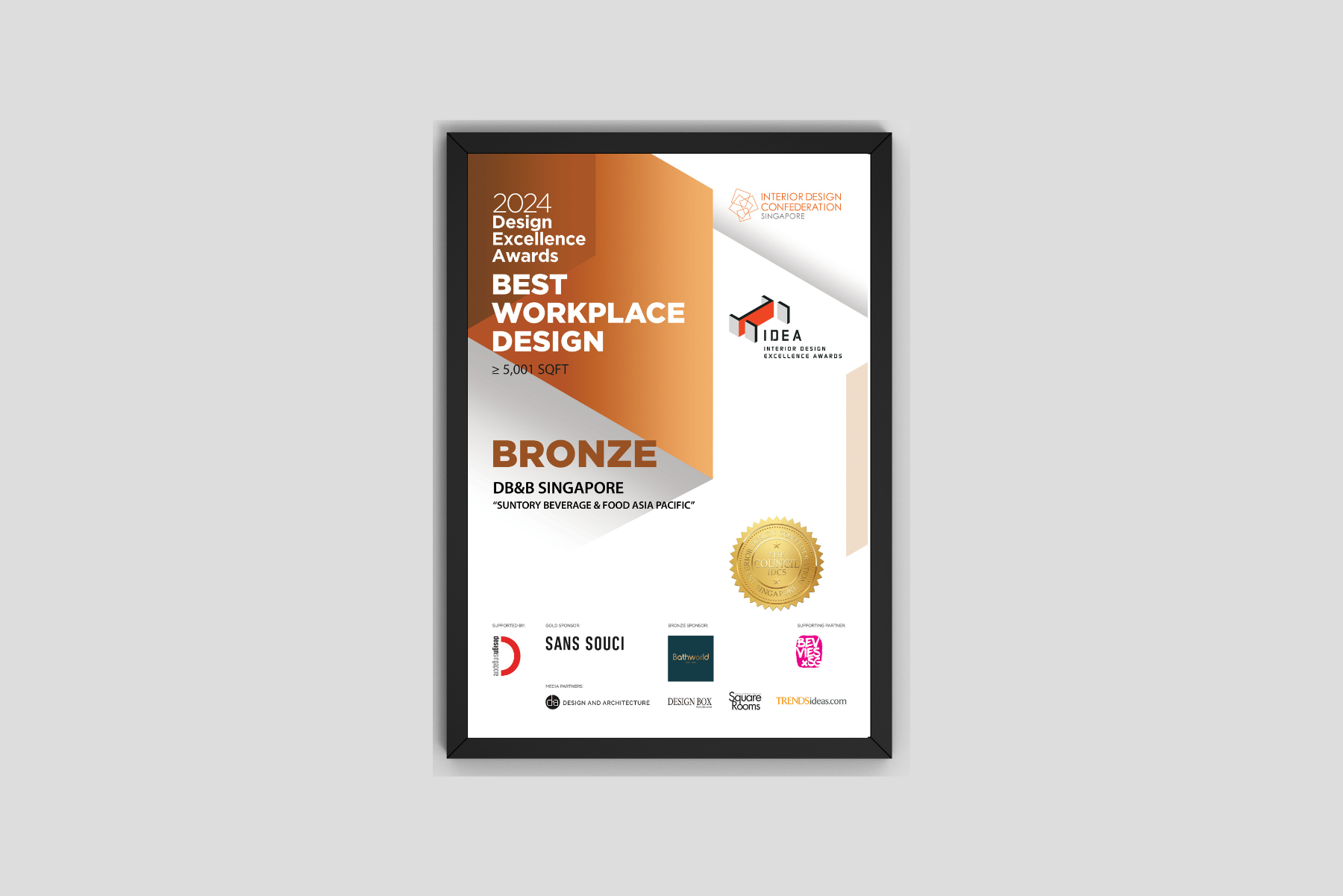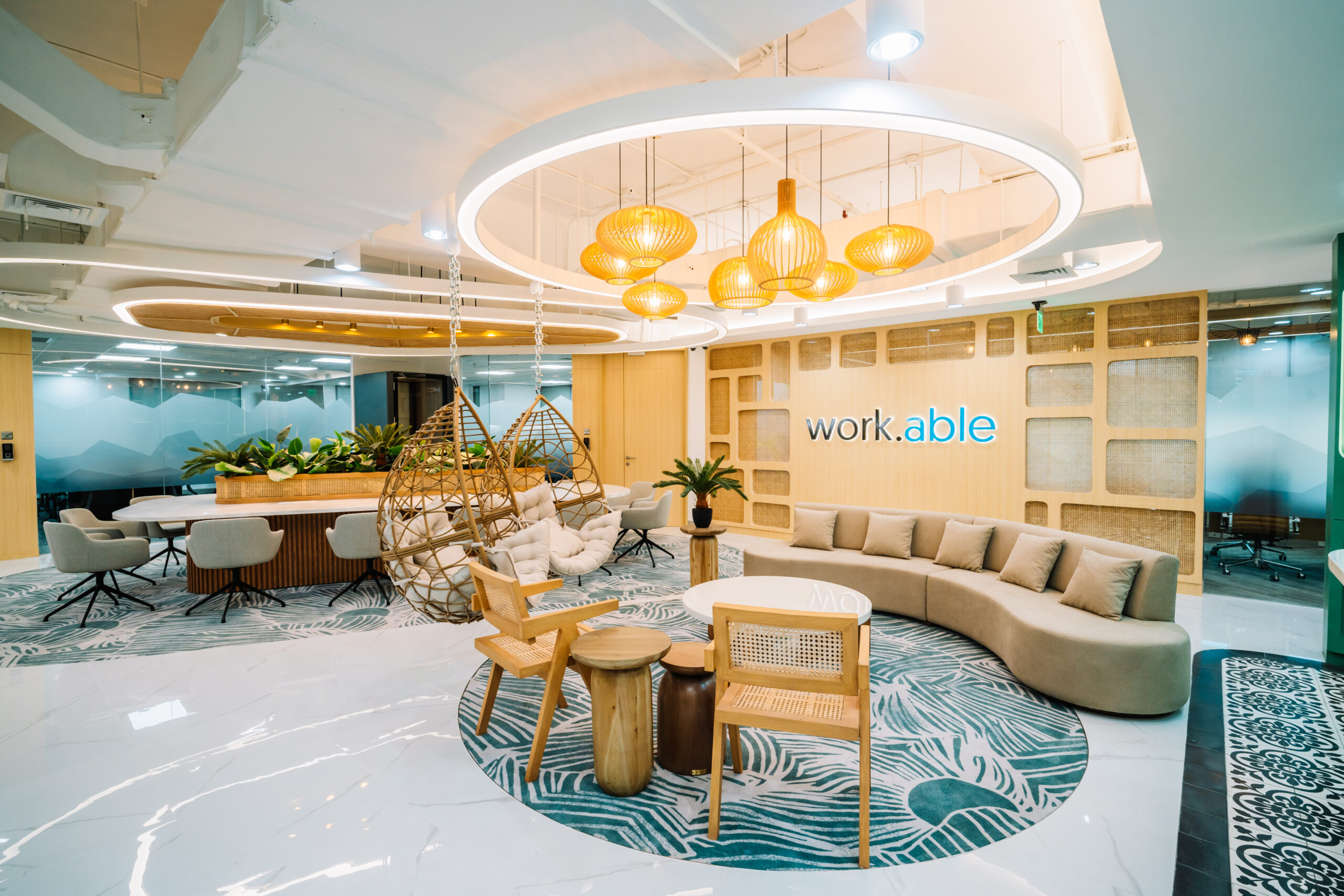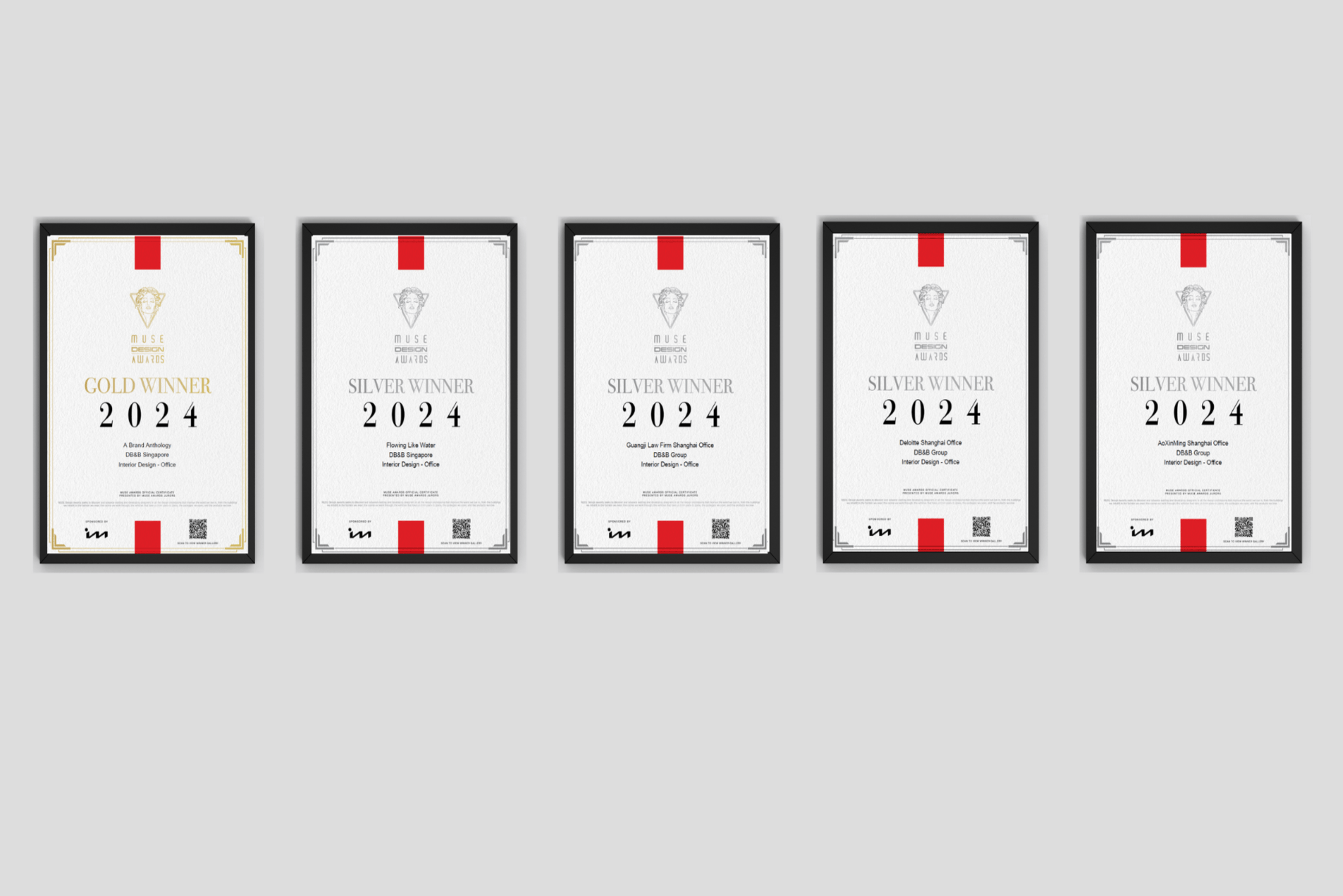How to Achieve the Ideal Office Design: Tips for a Productive Workspace
Are you looking to enhance your company’s brand identity and do not know where to start? How about changing your office layout? An ideal office design can greatly optimise spaces to create a highly conducive productive workplace.
In this article, we will take you through the key elements of office design and how they can be used to boost productivity and the work culture of an organisation.
Key Takeaways
- A thoughtfully designed office is essential for the productivity and well-being of the company, ultimately projecting its brand values and work culture.
- An ideal office design will incorporate flexible workplaces, ergonomic furniture and natural light and greenery integrated spaces to boost productivity.
- It is crucial to have collaborative open spaces, quiet zones, and relaxing breakout areas in the office so that a harmonious work environment is created, letting employees with varying work styles function in their optimal capacity.
Introduction
To feel inspired, workers need a harmonious space that fulfils their needs, and an ideal office design ensures that. It is not a place of daily grind but a house where creativity and well-being are taken care of while making a lasting impression on clients and visitors. It is a tangible expression of your company’s culture and values, a well-crafted environment that tells employees they are valued and nurtures their diverse needs.
Understanding the Importance of Office Design
An ideal office is one where every element is tailored to enhance the work experience of the employees. It is not just an aesthetic-looking space but also a domain that lifts the spirit. From the layout to the lighting, everything is vital for designing a modern office which is the foundation of running a successful business. Understanding the impact of the office space on daily operations leads to the creation of an environment that not only fosters innovation and collaboration but also promotes employee well-being, ultimately helping in retaining top talent.
Here are some ways a well-designed office environment can send a positive message—informing employees and clients alike that the company cares:
- Designing an open plan office that encourage teamwork
- Providing ergonomic chairs that support long hours of productivity
- Incorporating natural lighting that boosts mood and energy
- Creating comfortable break areas that promote relaxation and socialisation
- Building adjustable workstations that support employees’ work requirements.
The office design is a reflection of the company’s heart and soul. Aligning it with the cultural objectives and values is essential in creating a unique, cohesive workspace that resonates with both employees and clients.
Key Elements of Ideal Office Design
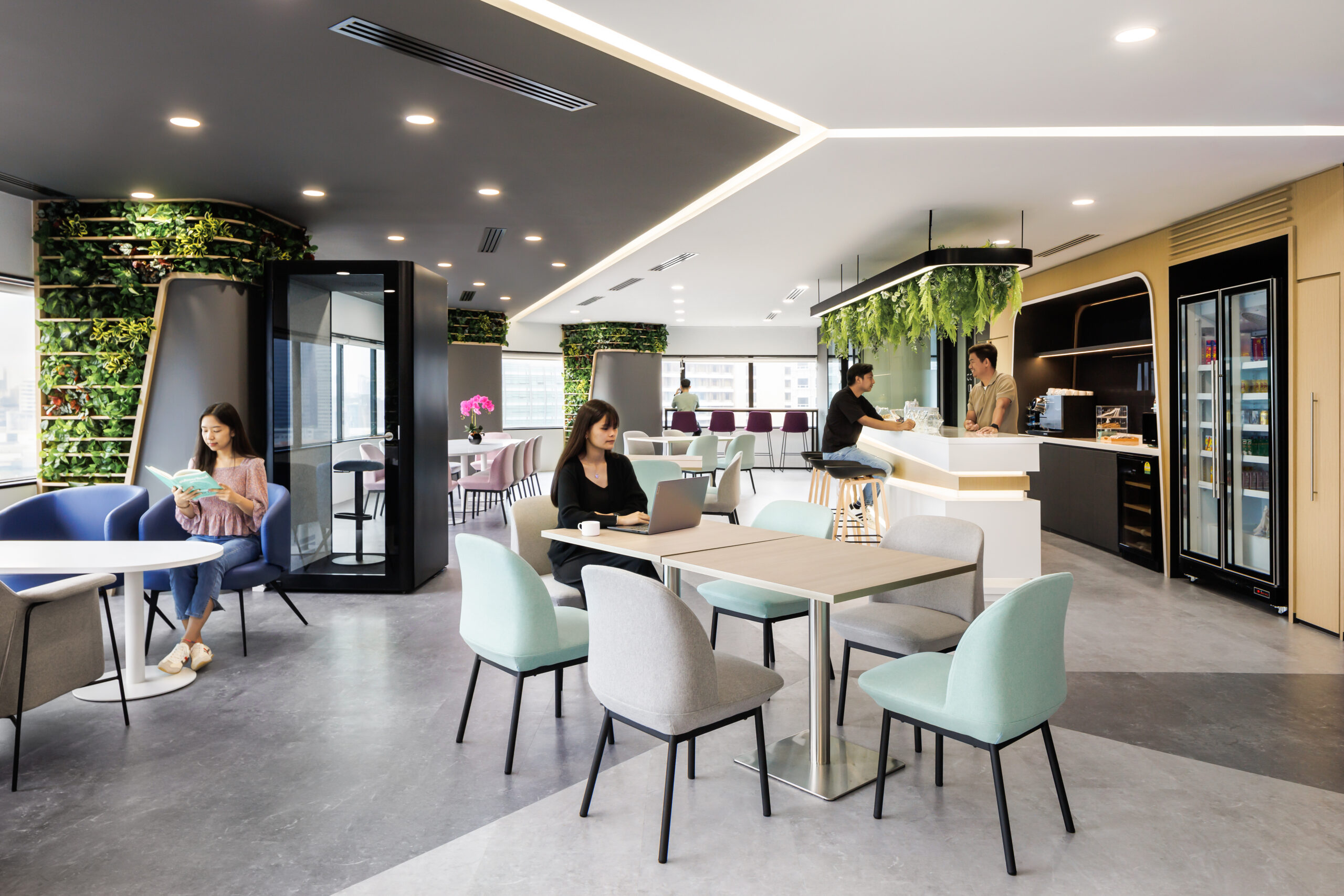
The key elements in the anatomy of an ideal office include three aspects – flexible workspaces, ergonomic furniture, natural light and greenery. These components are the building blocks of a well-designed office as each of them has a pivotal role in crafting an environment that supports the diverse needs of modern workers.
Whether it’s through the vibrant hues of the office chairs that lift spirits or the clutter-free serenity of personal storage solutions, every minute detail contributes to making an office design functional and a joyous place to work in.
Flexible Workspaces
The modern workforce is dynamic, and the spaces they work should mirror that. Flexible workspaces provide the necessary agility and adaptability needed to support a range of activities including deep focus and collaborative brainstorming. Office layouts that allow employees to move freely and choose workspaces that match their tasks and moods, help in making a team productive and satisfied.
The clever use of movable furniture and modular construction can transform a traditional office into a landscape of possibilities. Flexible workspaces should have at least 11 square metres of space per person, offering enough room to breathe, and ensuring a comfortable environment that caters to the flow of the workday with flexible seating arrangements.
It is about using design to weave the narrative of the brand throughout the office space, from environmentally friendly materials that speak for sustainability goals to social spaces that encourage openness and transparency.
Ergonomic Furniture
The foundation of a healthy workspace lies in ergonomic furniture. Modern office designs having ergonomic furniture and strategic layouts can increase productivity by up to 12%. The physical strain on the workers can be reduced with supportive chairs and adjustable desks.
The simple act of sitting in a chair that offers optimal lumbar support can keep myriad health issues at bay. It enhances focus as employees are more comfortable doing long hours of work.
By using height-adjustable desks, the office space gives the employees the option to switch from sitting to standing, mitigating the risks associated with sedentary behaviour.
The inclusion of wellness rooms and workplace wellness initiatives like standing desks takes employee care a step further, creating a supportive work environment that values health and happiness.
Ergonomic furniture not only minimises discomfort and strain it also enhances productivity by fostering proper posture and well-being. When employees feel good physically, they perform better, and the office space becomes a catalyst for creativity and efficiency.
The company’s unique character can be introduced in the office through branded colour schemes, custom furniture, and artwork. This not only creates an environment that inspires but also fosters a strong sense of belonging among employees.
Natural Light and Greenery
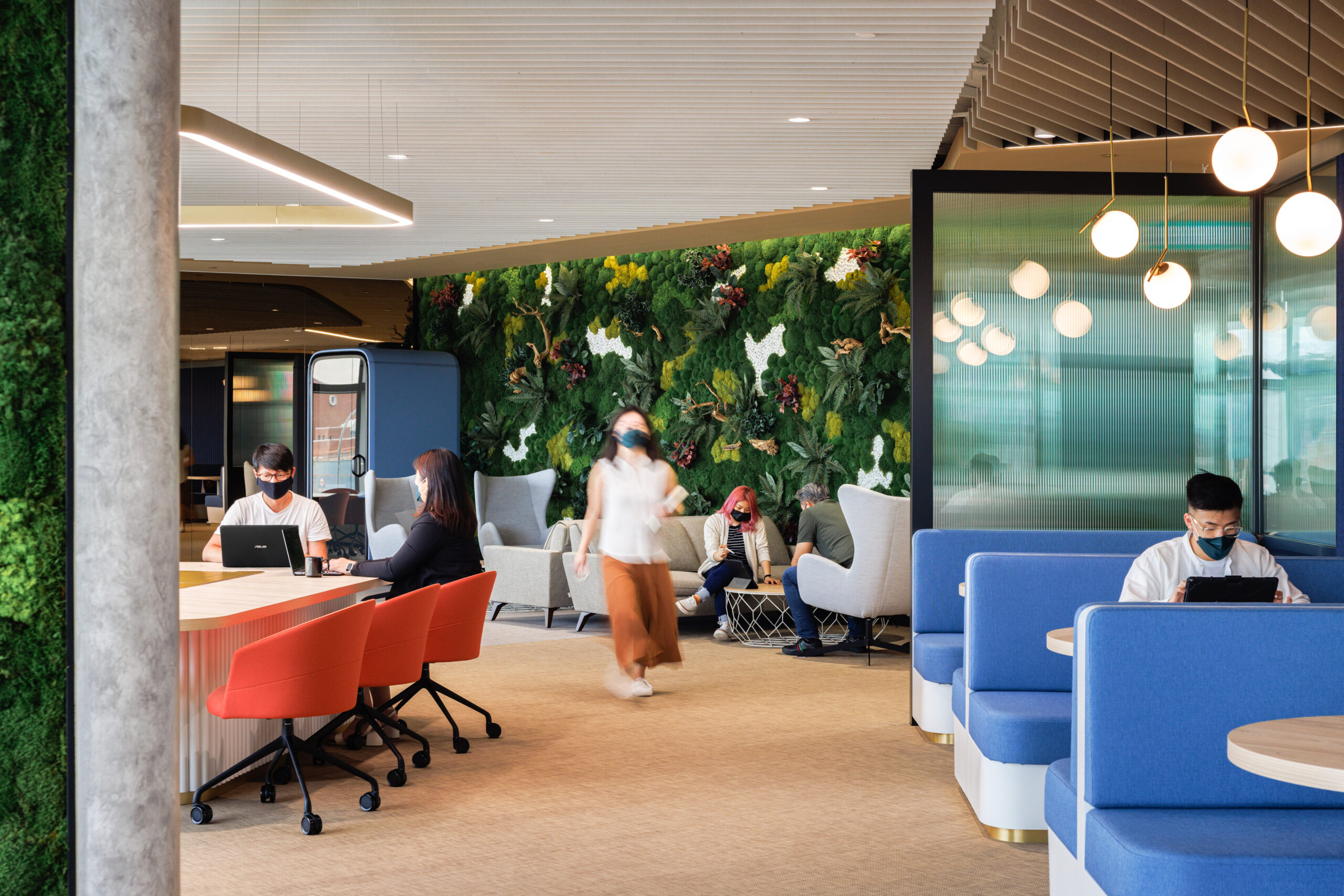
To make the workplace a sanctuary of employee well-being, access to natural light and the presence of indoor plants is important as they can uplift the mood and reduce stress. It helps in creating a relaxed and energised atmosphere. The addition of greenery beautifies the space and promotes relaxation by preventing the surrounding environment from getting stale. It also acts as a catalyst to improve indoor air quality. Furthermore, optimal lighting enhances their focus and keeps distractions away.
Nature-inspired designs answer the call of the wild in contemporary office spaces as they bring the outdoors inside. Biophilic design elements, such as green walls and living walls improve air quality and add to the aesthetics of the place. They turn the office environment into an inviting place that promotes creativity and focus.
The biophilic design elements are more than just decorative as they act as a stimulant, lowering the stress levels of people, and improving the memory and mood of the employees.
Creating a Harmonious Work Environment
The magic of a well-designed office lies in its ability to balance the need for collaboration and privacy, building a harmonious environment that resonates with every member of the team. The employees can display their unique perspectives and help the company grow, if the workspace encourages inclusivity, and demonstrates trust and respect in people. This delicate balance is achieved by blending open areas with private spaces. You choose to have no partitions or use glass partitions accordingly to fulfil the need for connection and isolation in the team.
Open Spaces for Collaboration
Open-plan offices are not just a trend but a place of powerful collaborations. By removing physical barriers, these spaces improve communication and idea sharing amongst people as they encourage spontaneous interactions which often leads to groundbreaking innovations. The benefits of open-plan offices include:
- Improved communication and collaboration
- Increased idea sharing
- Easy reconfiguration to accommodate different team activities
- Flexibility for impromptu meetings and focused group projects
Quiet Zones for Focus
While collaboration has an important role in making a business successful, solitude is equally significant. Quiet zones are the yin to the open space’s yang as it acts as a sanctuary to do focused work, free from the buzz of activities. Soundproofing and acoustic panels create these havens within the office, ensuring that when concentration is key, distractions are kept to a minimum.
Breakout Spaces for Relaxation
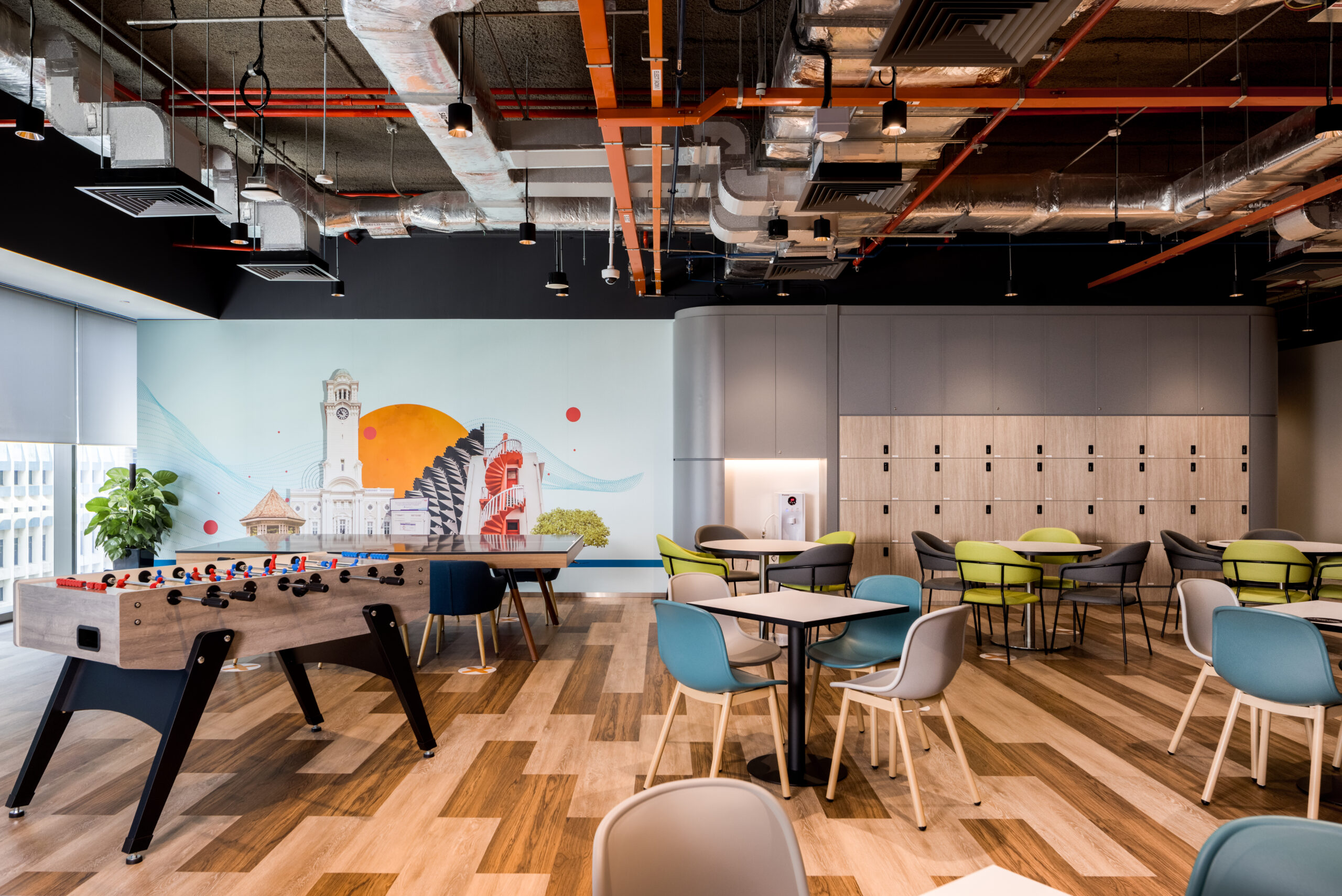
Working all day without any breaks hampers the creativity and the thought process of the employees. That is why breakout spaces are necessary for people to relax and recharge in between tasks. It relieves the stress of a heavy workload day by letting them rejuvenate in comfortable seating or supplement their brain with recreational activities. These spaces are not a luxury but a necessity for maintaining motivation and job satisfaction amongst employees as they provide a venue to step away from desks.
Innovative Office Design Ideas
Constant improvisation is essential in the world of office design as the needs of the industries and the people working in every sector change. So, innovation is key to making office spaces relevant and trendy as per the changing dynamics of the modern workforce and this includes smart technology integration, multipurpose spaces and biophilic design elements, which are at the forefront of an inclusive and nurturing workspace. It pushes the boundaries of what an office can be.
Technology Integration
Technology is at the heart of today’s business solutions and hence office designs have to be integrated with smart office technologies and interactive meeting tools. It has revolutionised the way people work and conduct meetings by making these activities more engaging and efficient. From lighting that adapts to mimic the natural progression of daylight to wireless devices that declutter and enhance productivity, integrating technology into office design has a significant impact.
Multipurpose Spaces
To prepare for the future you need an adaptable office design which can be adjusted according to the future needs of the business. Multipurpose spaces offering environments that cater to a wide array of tasks and needs are ideal to make a workspace future-compatible as they come with functional designs like versatile breakout areas that can serve us as a lunch space and a meeting room; training areas that can be turned into office space with modular furniture.
Practical Tips for Implementing Ideal Office Design
When it comes to designing a functional office, practicality is of paramount importance. A perfect office is not about big ideas but the execution of the ideas. To build a functional and aesthetically pleasing office design you need to conduct employee surveys to understand their needs to plan and set budgeting accordingly for a seamless transition.
Conducting Employee Surveys
Understanding the unique dynamics of your team is essential in crafting an office space that truly resonates with them. You gain valuable insights into what the employees treasure in the workspace and how it can be enhanced further through employee surveys. With the help of some tailored and specific questions the variables that impact the team’s productivity and satisfaction can be uncovered, making it easier to take the first step towards a functional office design.
Planning and Budgeting
With careful planning and thorough budgeting, one can conquer the onerous task of redesigning an office. An office redesign plan should start by setting clear objectives so that expenditures can be prioritised throughout the process. This ensures that every dollar spent aligns with the company’s broader goals. A well-thought-out budget is the roadmap to a successful design as it minimises unnecessary costs and helps you make financial decisions.
Partnering with Professional Office Designers
When it comes to bringing your office design ideas to life, professional office designers like DB&B are invaluable allies. With our wealth of expertise and eye for detail, we can transform the office space into a functional masterpiece that reflects your brand culture and identity. We ensure that the office is built to meet your team’s needs. Our expert designers offer innovative solutions that make the office future-ready while ensuring all compliance issues are fulfilled.
Summary
To wrap up, an ideal office design is a critical business necessity where all the elements that make an office a fruitful workplace culminate into creating an inspiring and supportive work environment. From ergonomic furniture that cares for the physical well-being of the team to flexible workspaces that adapt to their changing needs, every aspect of office design plays a pivotal role in fostering productivity and satisfaction. An investment in the office space is an investment in the heart and soul of the business as it adds value to the people who make it.
Frequently Asked Questions
How does office design impact employee productivity?
Creating an office space with ergonomic furniture, optimal lighting, and strategic layouts can boost employee productivity by up to 12%.
Can the office environment improve employee well-being?
Yes, you can reduce stress and improve the mood and overall well-being of the employees by incorporating elements of nature like natural light and indoor plants. Wellness rooms create a healthier, more supportive work environment which in turn leads to enhanced work satisfaction and productivity.
Why is it important for office design to reflect company culture?
Office design needs to reflect company culture because it creates a cohesive and unique workspace that reinforces the company’s identity, values, and goals by fostering a strong sense of belonging among employees, helping it retain and attract top talent.
What are the benefits of flexible workspaces?
Flexible workspaces offer numerous benefits, including increased employee satisfaction, productivity, and adaptability. They support hybrid work models and cater to various work needs by letting employees move freely and choose spaces that suit their tasks and moods. This can lead to a more dynamic and productive work environment.
Why should a company partner with professional office designers?
Professional office designers provide specialised expertise in creating functional and aesthetically pleasing spaces. At DB&B, we provide innovative solutions tailored to your specific office space needs and ensure the business is future-ready.
